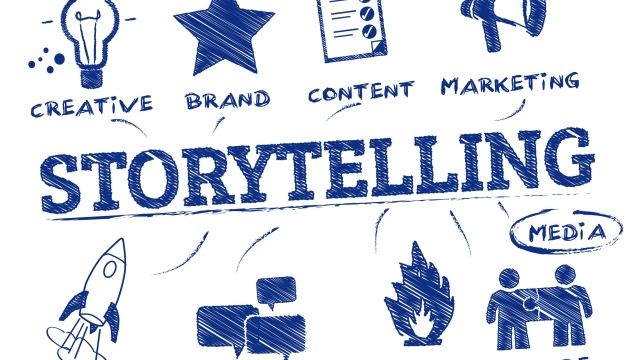
Storytelling is a timeless art that has captivated and connected people throughout history. From ancient cave paintings to modern novels, narratives have been used to convey ideas, evoke emotions, and ignite our imaginations. It is a powerful tool that transcends boundaries and brings people together through the shared experience of a story.
At its core, storytelling is about more than just entertainment. It has the ability to shape our perception of the world, challenge our beliefs, and inspire us to take action. Through the fabric of a compelling narrative, complex ideas can be simplified, difficult concepts can be made relatable, and universal truths can be revealed.
What sets storytelling apart is its ability to communicate on multiple levels. It engages our senses, captures our attention, and transports us to different times and places. Whether it is through the written word, spoken dialogue, or visual imagery, storytelling has the power to evoke emotions and create a connection between the storyteller and the audience. It allows us to not only understand the experiences of others but also explore the depths of our own thoughts and feelings.
In a world saturated with information, storytelling remains a fundamental means of communication. It provides a framework for us to make sense of the world and is vital in preserving and passing on our collective wisdom. As we delve into the art of weaving narratives, we unlock the power of storytelling and unleash its potential to inspire, educate, and transform lives.
The Importance of Storytelling in Communication
Storytelling plays a crucial role in effective communication. It has the power to captivate audiences, convey messages, and create a deeper emotional connection. Whether it’s a personal anecdote, a brand’s origin story, or a fictional tale, storytelling has an innate ability to engage and resonate with others.
By using storytelling techniques, we can craft narratives that are memorable and relatable. When we share our experiences or ideas through stories, we tap into the imagination and emotions of our listeners, making the message more vivid and meaningful. Stories have the ability to break down complex concepts, allowing for easier understanding and retention of information.
Additionally, storytelling in communication helps to build empathy and foster connections. When we share our authentic experiences, it humanizes us and allows others to relate on a personal level. A well-told story can bridge gaps in understanding, create common ground, and bring people together.
In professional settings, storytelling can be a powerful tool for persuasion and influence. By using narratives to support our arguments or illustrate our points, we can make our messages more persuasive and memorable. Stories have the ability to evoke emotions, which can play a key role in swaying opinions or inspiring action.
In conclusion, storytelling is not just about entertainment or creative expression; it is a valuable skill in effective communication. From personal interactions to business presentations, incorporating storytelling techniques can make our messages more impactful, relatable, and memorable. By understanding the importance of storytelling, we unlock the power to weave narratives that capture attention, engage minds, and connect hearts.
Elements of a Powerful Narrative
A powerful narrative relies on several key elements that captivate and engage the audience. By skillfully weaving these elements together, storytellers can create a rich and immersive experience.
-
Characters: Characters serve as the backbone of any narrative. They add depth, emotion, and relatability to the story. Well-developed characters with clear motivations and personalities draw the audience in, making them emotionally invested in their journey.
-
Conflict: Conflict is the driving force behind a narrative. Whether it’s an internal struggle within a character or an external obstacle they must overcome, conflict creates tension and propels the story forward. By presenting challenges and obstacles, storytellers keep the audience hooked, eagerly anticipating how the conflict will be resolved.
-
Setting: The setting provides the backdrop for the story and can greatly influence its tone and atmosphere. A well-described and vividly portrayed setting enhances the narrative by immersing the audience in a specific time, place, or world. It allows readers to visualize and engage with the story more effectively.
Remember, a powerful narrative artfully incorporates these elements to take the reader on a journey that evokes emotions, sparks imagination, and leaves a lasting impact. By carefully crafting characters, conflict, and setting, storytellers unleash the true power of storytelling.
Techniques for Effective Storytelling
In order to weave captivating narratives, there are several techniques that can be employed to make your storytelling more effective.
-
Engaging Introductions: Begin your story with a strong hook to capture the attention of your audience. Introduce characters, settings, or situations that immediately evoke curiosity or interest. By starting with a compelling opening, you can draw in your listeners and set the stage for the story you are about to tell.
-
Vivid Descriptions: Use descriptive language to paint a vivid picture in the minds of your audience. By incorporating sensory details, such as sights, sounds, smells, tastes, and textures, your listeners can immerse themselves in the story. This helps create a more engaging experience and brings the narrative to life.
-
Emotional Connections: Building emotional connections with your audience is key to effective storytelling. Tap into universal emotions such as love, fear, joy, or sadness to create a relatable and empathetic experience. By touching the hearts of your listeners, you can make your story resonate on a deeper level and leave a lasting impact.
By utilizing these techniques, storytellers can enhance the power of their narratives and captivate their audience from beginning to end.
Remember, storytelling is an art form that requires practice and creativity. Experiment with different techniques, find your unique style, and continue to refine your skills as a storyteller. Harness the power of storytelling to engage, inspire, and create meaningful connections with your audience.
